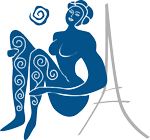ASVAL
Ambulatory Selective Varices Ablation under Local anesthesia
The ASVAL method
A new innovative method of treatment
The ASVAL method (Selective Ablation of Varicose Veins under Local Anesthesia) was developed in the early 2000s as a result of research by Dr. Pittaluga’s team, which was dissatisfied with the systematic nature of the traditional treatment represented by stripping :
The ASVAL method is now recognized by experts around the world as a fully-fledged option for the treatment of varicose veins in the most common cases.
However, it can only be practiced with a high level of expertise in order to determine which patients can benefit from it. It is important to note that the earlier the varicose veins are treated, the more likely it is that the ASVAL method will be chosen, with excellent results in the medium and long term.
Dr. Pittaluga’s team at the Riviera Vein Institute was the first to describe and give the name to the ASVAL method, which was registered in 2003 (INPI). Since then, nearly 8,000 procedures have been performed by the Riviera Vein Institut team using this method with complete satisfaction from patients and corresponding general practitioners, angio-phlebologists and other specialist.
The Riviera Vein Institute now offers this modern and effective method in Paris with the establishment of the Paris Vein Institute directed by Dr. Pittaluga !
The advantages
The main advantages
of the ASVAL Method
A method for the future
The ASVAL method is not very aggressive and is selective because it only removes diseased, irrecoverable veins. It is therefore conservative and preserves as much as possible the venous capital and the saphenous vein. Preservation of venous network capital is important for the venous drainage but can also be very useful for arterial bypass surgery using the saphenous vein.
A gentle method
ASVAL is a gentle method that removes diseased veins using microincisions the size of a needle hole. There are no stitches, hematomas are very rare and pain is non-existent or minimal.
A safe method
The ASVAL method is most often performed under local anesthesia, sometimes with the help of relaxing techniques, which significantly reduces the anesthetic risk.
An outpatient method
Hospitalization is not necessary. The patient is discharged 1 hour after the end of the procedure.
Wearing a compression stocking
The absence of tissue trauma allows for the short duration of the compression stocking (only a few hours).
A simple and aesthetic method
There is no large incision, therefore no stitches on the skin. Only skin strips (mini plasters) cover the micro-incisions, which allows the patient to take a shower the day after the operation. The aesthetic result is remarkable. The return to daily activities is immediate and the resumption of work is rapid. The wearing of postoperative compression stockings is limited to the first 24 hours.



